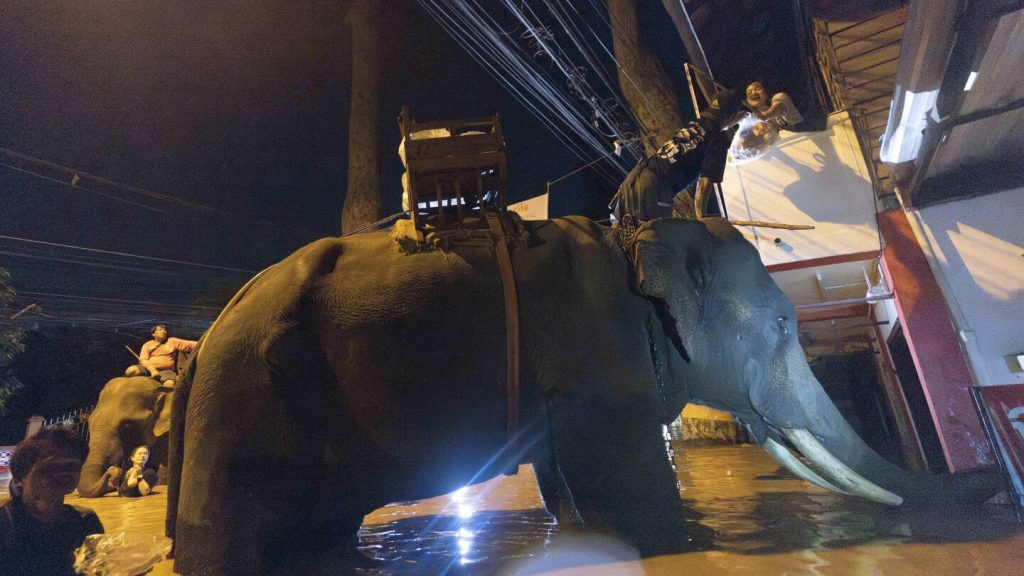The central provinces of Thailand, including Bangkok, are on high alert for potential flooding as the Irrigation Department prepares to release water from the Chao Phraya Dam to prevent it from reaching full capacity. The decision to release water comes after weeks of heavy rainfall in the region, leading to increased water levels in rivers and reservoirs. In the northern city of Chiang Mai, the situation is dire as floodwaters have risen to waist-high levels in some areas, leaving many residents, especially the elderly, stranded and in need of assistance. Volunteer rescue teams are working tirelessly to provide food and evacuate those affected by the floods, with some areas experiencing power outages for safety reasons.
Despite the rain stopping in Chiang Mai, the aftermath of the heavy downpours has left parts of the city submerged in water, with popular tourist spots like the Night Bazaar and Tha Pae Gate inundated with up to 3 1/3 feet of water. People are seen wading through floodwaters, dragging their belongings to safety, while others are being rescued by boat from their flooded homes. The Ping River, which runs along the city’s eastern edge, began overflowing its banks on Friday, exacerbating the flooding situation in the area. This annual problem of flooding during the monsoon season has once again wreaked havoc in many parts of Thailand, with Chiang Mai bearing the brunt of the recent heavy rainfall.
The plight of animals is also a major concern in Chiang Mai, particularly for those housed in parks and sanctuaries on the outskirts of the city. Reports indicate that most of the 125 elephants at the Elephant Nature Park have been safely relocated, while some managed to escape on their own in search of higher ground. Shocking images in Thai media show elephants struggling to keep their heads above water, with at least two elephants found dead and several others missing. The devastating impact of the floods on wildlife underscores the urgent need for swift action to ensure the safety and well-being of vulnerable animals in the region.
Amidst the ongoing rescue efforts in Chiang Mai, residents and tourists are grappling with the aftermath of the flooding, with many facing the daunting task of rebuilding their lives and livelihoods. The disruption caused by the floodwaters has led to widespread damage to property, infrastructure, and businesses, further complicating the recovery process. As the clean-up and restoration efforts get underway, the local authorities are working tirelessly to provide assistance to those affected by the floods and ensure that essential services are restored in a timely manner. The spirit of resilience and community solidarity shines through as people come together to support one another in the face of adversity, demonstrating the strength and unity of the Chiang Mai community in the wake of this natural disaster.
As the floodwaters recede and the situation gradually stabilizes, the focus shifts towards long-term measures to mitigate the impact of future flooding events in Thailand. The need for improved infrastructure, early warning systems, and sustainable water management practices becomes increasingly apparent in the face of changing climate patterns and extreme weather events. Government agencies, environmental organizations, and local communities must collaborate to develop comprehensive strategies to enhance flood resilience and protect vulnerable populations and ecosystems from the devastating effects of flooding. By investing in proactive measures and sustainable solutions, Thailand can better adapt to the challenges posed by climate change and build a more resilient and sustainable future for generations to come.


